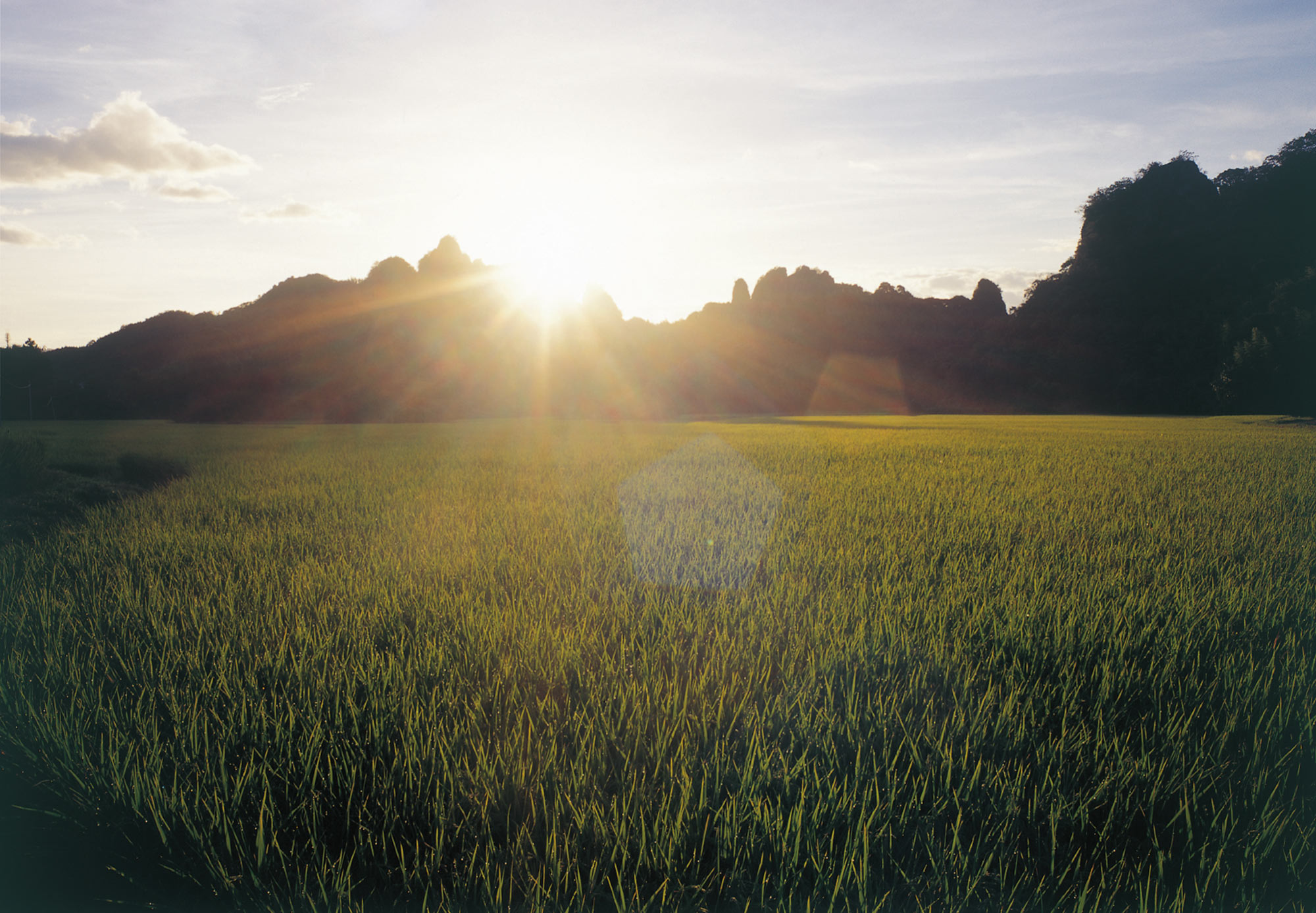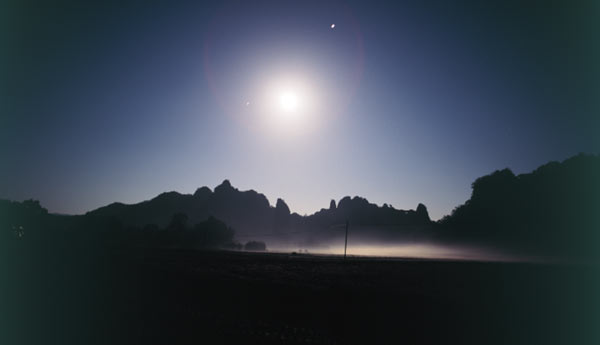

- Kunisaki Peninsula
- Landscape
Tashibu-no-Shou
Photography/ISHIMATSU Takeo
the Original Landscape of Japanese Agriculture
Upstream of the Katsura River flowing through Bungotakada in the southwestern part of the Kunisaki Peninsula is the Tashibu Basin. Highlights of “Buddhist Village Kunisaki”, such as Fuki-ji Temple, Maki Odou Temple and Kumano Magaibutsu are located nearby. In this basin lies Tashibu-no-Shou.
This area was planned for development as cultivated land. In response to this, the first Manor Settlement Ruins Distribution Survey began in 1981 and spanned five years.
The purpose of the survey was to academically study the landscape itself, such as current settlements including paddies eligible for development, positioning it as a historical and cultural heritage with past human activity carved in.
The results of this survey had huge repercussions. It was discovered that the area around Ozaki Village had an extremely well-preserved rural landscape that has changed little since the Middle Ages. This put Tashibu-no-Shou in the limelight.
Usa Jingu Shrine had developed the area as a manor. It was one of the manors of the shrine, called the “18 Manors of Hongou,” though temporarily taken over by samurai. However, it was returned to the shrine after the Mongol invasions of Japan, for contribution Shinto-Buddhism made in warding off the foreign invasions.
The abundance of surviving literature related to Shinryou Kougyou-hou (the Shrine Performance Law) that returned the land to the shrine, its original owner, enabled the particulars of these events to be studied.
At any rate, the scenery from days past has remained remarkably intact.
Of course, there is more than just scenery. This area shows past and present lifestyles and settlements, revealing a unified historical environment with homes, paddies, water usage, and meadows, as well as the ruins of mansions and castles, religious facilities, cemeteries, and streets that organically connect nature, historical sites, and people.
This is exemplified in the traditional Otaue Festival (rice planting festival) held every June. The Manor Village Promotion Committee was created, with many owners named manor lords inside and outside the prefecture. Many visitors come to see the original landscape of Japanese agriculture, in which many cultural assets and over 800 years of history thrive along with spectacular views, such as a grotto at dawn and dusk.

The rising sun (pictured above) and the full moon (pictured below) illuminating Tashibu-no-Shou, which brings rural sceneries from the Middle Ages to the present day.

